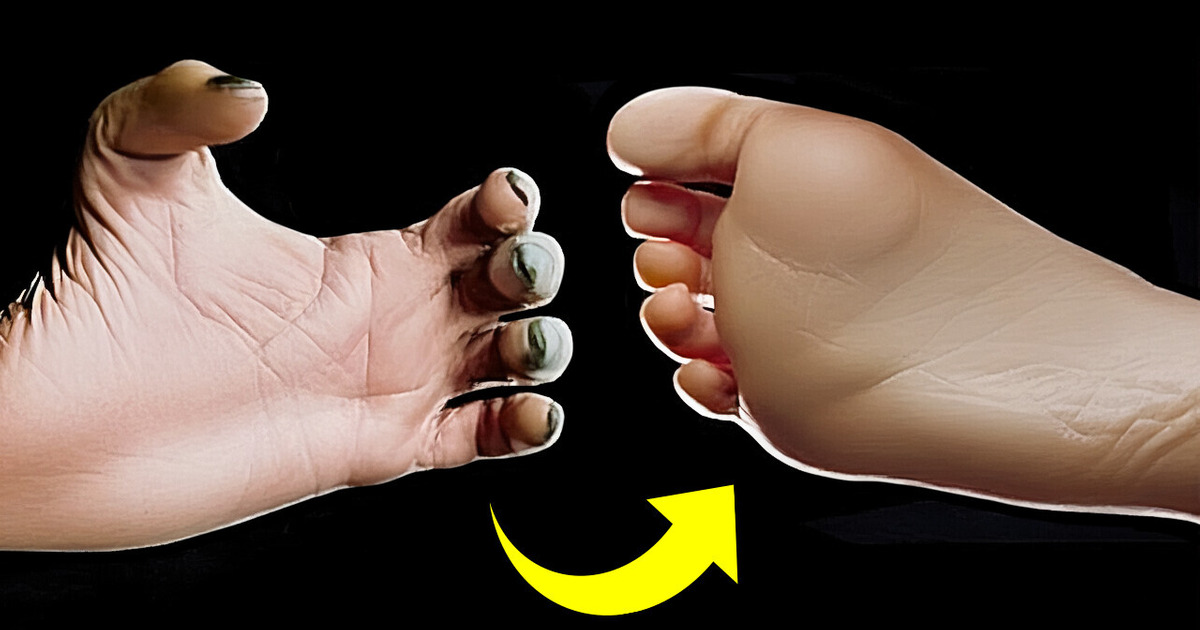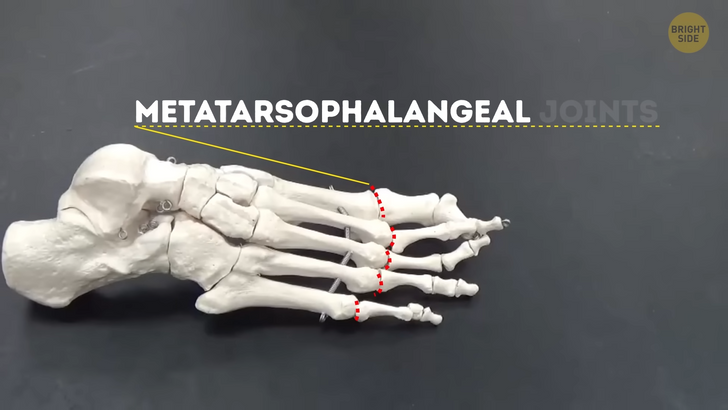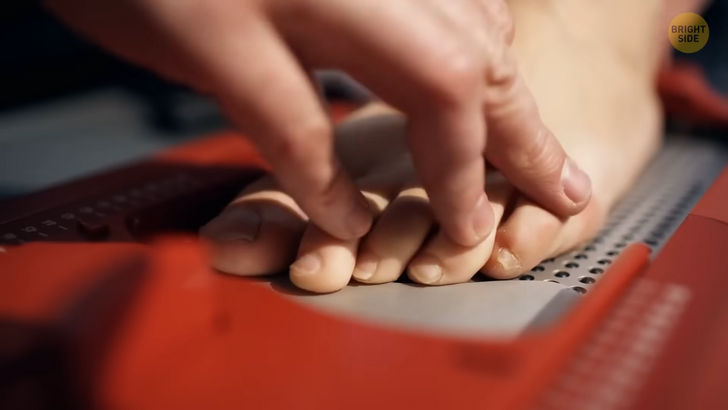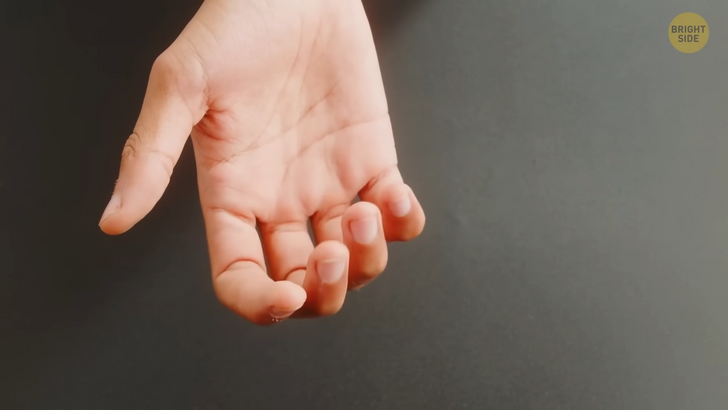9 Comments From People Who Can’t Help but Share Their Opinions


If you’ve ever hit your toe on a corner and felt that sharp pain, you know what I mean by “why we have such delicate feet.” Our feet are super sensitive. They’re covered with this special hairless skin full of nerve endings. That’s why it hurts so bad when we get a foot injury.
Yet, they aren’t as delicate as we think. It’s incredible how our feet are put together. They consist of twenty-six bones, thirty-three joints, and over a hundred muscles, tendons, and ligaments. These are working together like a machine to let us move around.

When we run, our feet work like springs. They must handle up to seven times our body weight every time they hit the ground. Thanks to the clever arrangement of ligaments, tendons, and muscles, our feet store and return much of that force to the ground. By the way, they can also give us hints about our overall health.
And every pair of feet is unique. No two pairs are exactly the same. They come in different sizes, shapes, flexibility, strength, and walking patterns. It’s like our feet have their own personalities. But how have our feet come to this point? Researchers have been trying to figure out when and how early humans started walking upright. Well, they’ve been looking at feet—toes, to be exact. Bipedalism, which means walking on two legs, was a major step in human evolution. It influenced a bunch of other changes in our lineage, like how we behave socially and develop our material culture. So, these scientists have been digging into the details of foot evolution to piece together the story of our species.
The team has been checking out these special joints called metatarsophalangeal joints, which are placed between the long bones of the foot and the toe bones. In twenty fifteen, they found that, unlike in other primates, this type of joint in humans faces upwards, allowing us to extend it, which is perfect for walking on two legs. But apes and other primates have downward-facing joints, giving their feet a hand-like grasp.

In their latest study, the researchers looked at fossils of primates and hominins — a human group — to see when this upward-facing joint first appeared. It turned out it had shown up about four point four million years ago in the lateral toes closest to the outside edge of the foot. Yet, the big toe kept its downward-facing joint until much later, about two point two million years ago. So, it seems like early feet might have still kept some grasping ability while people were adapting to walking on two legs. The fully bipedal-adapted big toe evolved relatively recently.
But weirdly, our feet didn’t leave much of a trace in the fossil record until recently. It’s frustrating because understanding how our feet evolved is crucial to unraveling the story of human evolution, especially when it comes to walking on two legs. Our modern human foot evolved separately to suit different needs. The chimpanzee foot is more flexible, suitable for climbing trees, while the human foot is stiffer, perfect for bipedal walking.

Speaking of feet, we might as well talk about the benefits of walking barefoot. It can actually bring us closer to our natural walking pattern or our gait. That’s a good thing because it allows our body to move the way it’s meant to. Shoes can make you feel like you are walking on clouds, but they can sometimes hinder certain muscle groups from doing their job and strengthening our bodies.
But when you go barefoot, for starters, you have better control over how your foot lands on the ground. This helps with balance, body awareness, and even pain relief. Plus, it can improve your foot mechanics, which can positively affect your hips, knees, and core. It keeps your foot and ankle joints flexible and strong, thanks to the proper range of motion and muscle stability.
And let’s not forget about those uncomfortable shoes that don’t fit right. Walking barefoot can relieve issues like bunions or hammertoes caused by improper footwear. Have I mentioned stronger leg muscles? Yep, going barefoot can give your legs a nice workout, which is excellent for supporting your lower back. So, kick off those shoes and let your feet breathe the next time you find yourself on soft grass or sandy shores. Your body will thank you for it!

Not just our feet have evolved over time; our ancestors had bigger brains, too. It means our brains have shrunk. Researchers looked at cranial fossils and discovered that our brains started downsizing about three thousand years ago. Agriculture took the stage around ten thousand to five thousand years ago, and civilizations sprouted like mushrooms after a rainstorm. There were sprawling cities, architectural wonders, and even some fancy writing thrown into the mix.
The connection between brain size and IQ isn’t as straightforward as it seems. Many critters rock brains that make ours look dumb. A massive study with thousands of brain scans and IQ tests revealed that brain size and IQ are like two friends at a party — sometimes they dance together, and sometimes they go solo, with no strict correlation.
It turns out some ant societies are like a mirror to our own, complete with their own version of farming and teamwork. And ants with bigger societies have bigger brains, except when they get into the whole farming gig. But smaller brains might be a cooler choice when teamwork gets super complex.

Maybe the invention of writing around two thousand years ago also played its role. It’s like the ultimate external brain — you write stuff down, and boom, you have ideas at your fingertips. It’s like your brain is outsourcing its memory power.
Here is a recent thing you might want to consider, especially if you are a gamer. Some streamers have made an unexpected discovery after spending countless hours wearing headphones — there’s a headphone-shaped groove on top of their heads!
Let’s bring in science before we all start imagining our skulls reshaping like Play-Doh. It’s highly unlikely that headphones are engaged in skull remodeling. According to experts, giving a human skull a makeover takes two hundred and ninety-seven pounds of pressure. So, what’s really happening here? The headset is just giving a friendly nudge to our softer bits and pieces, causing a temporary dent that can be smoothed away.
Another thing is about your phone-holding style. Do you use your pinky to prop up the weight of your device, forming a sort of locked-in position? Ever wondered if this way of gripping might be causing some issues to your hand’s well-being?

Now, as smartphones keep getting bigger and better, a funny thing is happening — more and more people start noticing this “smartphone pinky” issue. You might have noticed a tiny groove forming on your pinky from being a loyal phone holder. Let’s set the record straight once and for all.
Holding your phone this way for long periods can actually bring some trouble. A common issue here is a trigger finger. Basically, bending your small finger to cradle the phone can cause it to get stuck in a flexed position, especially if you’ve got a trigger finger lurking beneath the surface. It’s like a tiny finger traffic jam.
Treatment often involves injections or minor procedures to release the tendon tangles. Your wrist might also decide to join the hand-hurting parade. This one causes numbness and tingling in your thumb and other digits. Plus, when your elbow is flexed — like when you’re holding your phone to your ear — it can put pressure on the ulnar nerve, leading again to numbness and tingling in your ring and little fingers.

Interestingly, apart from a tiny muscle called the arrector pili, our fingers don’t have muscles. So, how in the world do we wiggle them? The muscles in our forearms are like puppeteers pulling the strings behind the scenes.
These muscle maestros initiate finger movements, and here’s where the real magic happens — those movements are like secret messages zipping down to our fingers through tendons. Think of tendons as those trusty messengers, delivering commands straight to our fingertips. How’s that for finger wizardry?











